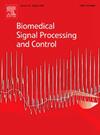Experimental validation of a finite state controlled functional electrical stimulation walking system with real-time gait phase detection using a single wearable IMU sensor
IF 4.9
2区 医学
Q1 ENGINEERING, BIOMEDICAL
引用次数: 0
Abstract
Functional electrical stimulation (FES) is an effective tool for activating lower-limb muscles in gait rehabilitation. Precise timing of FES according to gait sub-phases is crucial for effective gait movements. However, most FES systems are controlled by open-loop muscle stimulation based on pre-determined timings or therapist input. Real-time detection of gait sub-phases and controlling FES systems accordingly could improve efficacy. Yet many prior approaches either require multiple sensors or detect only two main gait events: Heel Contact and Toe Off. Simplification is essential for clinical translation, and a single-sensor setup can potentially streamline FES control in practical rehabilitation contexts. To overcome this limitation, the present study present a novel real-time gait phase detection algorithm for Finite State Machine (FSM) control during walking, utilizing a single wearable Inertial Measurement Unit (IMU). The algorithm was validated by recording stimulation timings and comparing them to lower-limb kinematics from simultaneous optical motion capture. Our algorithm accurately identified four gait sub-phases in real-time, with only a small differences relative to off-line gait sub-phase timings (averaging −2.88 ms for T1, 67.2 ms for T2, −0.68 ms for T3, and 6.63 ms for T4). We observed that most FES onsets occurred just after the gait phase transition, typically within 50 ms. Overall, this approach is simple to implement and shows potential for real-time FSM control of FES in gait rehabilitation, though additional validation is required before clinical deployment.
基于单个可穿戴IMU传感器的有限状态控制功能电刺激步行系统的实时步态相位检测实验验证
功能电刺激(FES)是激活下肢肌肉在步态康复中的有效手段。根据步态子阶段精确定时的FES是有效的步态运动的关键。然而,大多数FES系统是由基于预先确定的时间或治疗师输入的开环肌肉刺激控制的。实时检测步态子相位并对FES系统进行相应的控制,可以提高FES系统的工作效率。然而,许多先前的方法要么需要多个传感器,要么只检测两种主要的步态事件:脚跟接触和脚趾脱落。简化对临床翻译至关重要,单传感器设置可能会简化实际康复环境中FES的控制。为了克服这一限制,本研究提出了一种新的实时步态相位检测算法,用于行走过程中有限状态机(FSM)的控制,利用单个可穿戴惯性测量单元(IMU)。通过记录刺激时间并将其与同步光学运动捕获的下肢运动学进行比较,验证了该算法。我们的算法实时准确地识别了四个步态子阶段,相对于离线步态子阶段时间只有很小的差异(T1平均为- 2.88 ms, T2平均为67.2 ms, T3平均为- 0.68 ms, T4平均为6.63 ms)。我们观察到,大多数FES发作发生在步态相变之后,通常在50 ms内。总的来说,这种方法很容易实现,并且显示了FES在步态康复中的实时FSM控制的潜力,尽管在临床部署之前需要额外的验证。
本文章由计算机程序翻译,如有差异,请以英文原文为准。
求助全文
约1分钟内获得全文
求助全文
来源期刊

Biomedical Signal Processing and Control
工程技术-工程:生物医学
CiteScore
9.80
自引率
13.70%
发文量
822
审稿时长
4 months
期刊介绍:
Biomedical Signal Processing and Control aims to provide a cross-disciplinary international forum for the interchange of information on research in the measurement and analysis of signals and images in clinical medicine and the biological sciences. Emphasis is placed on contributions dealing with the practical, applications-led research on the use of methods and devices in clinical diagnosis, patient monitoring and management.
Biomedical Signal Processing and Control reflects the main areas in which these methods are being used and developed at the interface of both engineering and clinical science. The scope of the journal is defined to include relevant review papers, technical notes, short communications and letters. Tutorial papers and special issues will also be published.
 求助内容:
求助内容: 应助结果提醒方式:
应助结果提醒方式:


